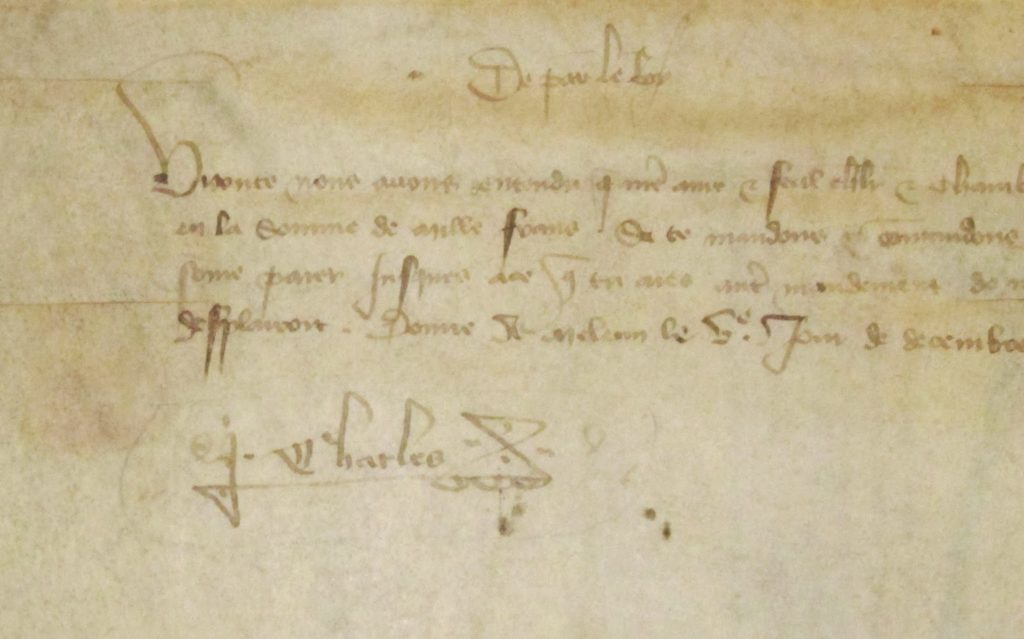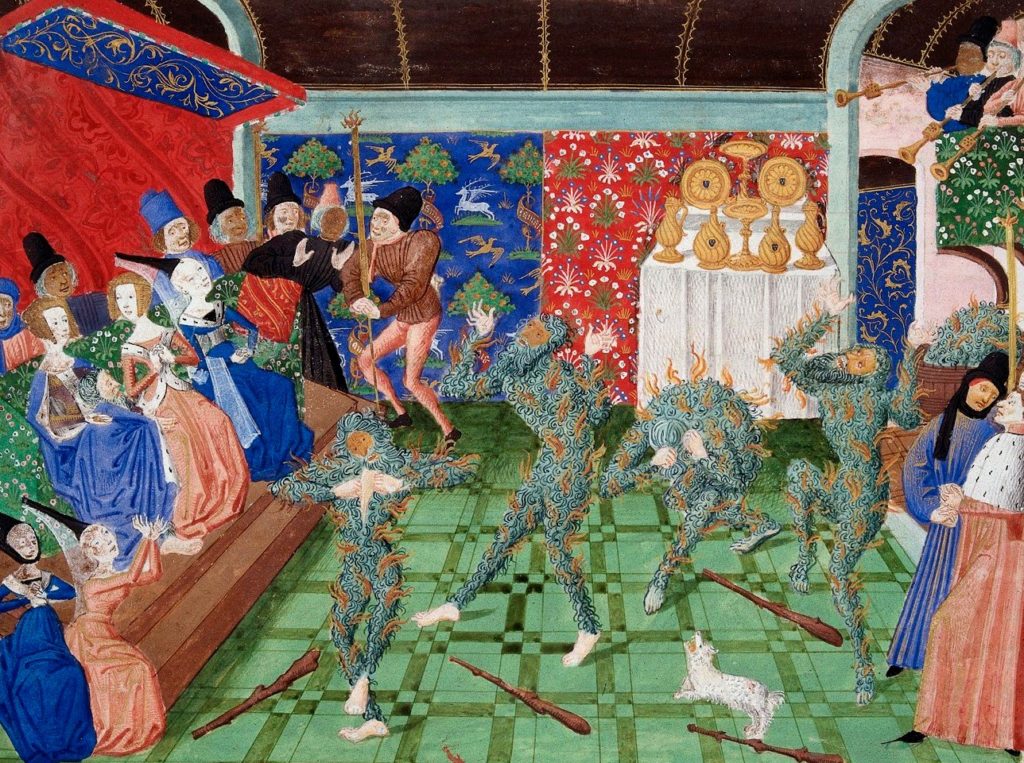Following on last week’s post about fiascos from our collections, we now bring you act II:
Act II: Fire Ball
 |
| Charles VI of France in an engraving from a later book on French kings. In The Rulers of France, MS f.233/22, The Rosenbach of the Free Library of Philadelphia. |
 |
| A document written by Charles VI during one of his more lucid periods. In The Rulers of France, MS f.233/22, the Rosenbach of the Free Library of Philadelphia. |
Charles VI of France
was king during a pretty rough time, reigning from 1380-1422. Europe was still recovering from the Black Death while France was in the midst of fighting the Hundred Year’s War against the English and suppressing widespread civic unrest within the kingdom. To top it off,
Charles also suffered bouts of insanity and paranoia. Still, his court tried to maintain
appearances and to put up a brave front. In
1393, one of Queen Isabeau’s ladies-in-waiting was to be remarried, and an occasion
that could have been an elegant celebration turned into a major fiasco, if not
worse. The problem had nothing to do
with political intrigue or the King’s psychosis, although by this time Charles suffered longer spells of delirium and had been advised to leave the stressful matters of state to his councilors to pursue more leisurely activities. And so the King and some of his close
retainers decided to enliven the wedding by turning it into a masquerade
and disguised themselves as “wild men,” semi-mythical forest-dwellers who figure in many
medieval legends. The idea was to make
themselves look hairy, so they used a kind of wax or pitch to stick stringy, scraggly flax
fibers all over their costumes. Thus
attired, they danced around wildly to the
amusement of the guests and surely the embarrassment of the Queen and her
ladies, encouraging the revelers to guess their identities. Charles ordered the torchbearers
to the far sides of the room just to make sure there were no incendiary
accidents. It might all have come off as
an embarrassing wedding moment had not the King’s brother, the Duke of Orleans,
arrived late to the party. Since he had
no idea who these hairy wild men were, he tried to get a look at their
faces…using the torch he brought with him to see them better. Before anyone could shout a word of warning,
the forbidden torch was close enough to catch the flammable pitch and fibers on
one of the wild men, and within seconds all five men, including the King were
burning.
 |
| The Bal des Ardents in Jean Froissart’s Chronicle (vol. 4, part 2), c.1470-1472. In the British Library, Harley 4380. |
One of them succeeded in dousing
himself (either with a tub of dishwater or—and many medieval chroniclers prefer
to picture this—by jumping into a wine vat), while other courtiers were
badly burned themselves trying to put out the other wild men. Credit the Duchess of Berry with being smart
enough to realize she could smother the flames with the train of her gown,
which actually saved the King’s life.
The other three wild men died of their injuries. The bal des ardents (“The Ball of the
Burning Men”), as it is known, wasn’t just a tragedy for the court—it proved a
fiasco for the French monarchy, eroding whatever trust remained in Charles VI’s
judgment. His relatives at court
stripped him of most of his powers to govern.
The political fragmentation that followed weakened France to the point
that civil war broke out between rival duchies and the English exploited the
crisis to invade, crush the French at the Battle of Agincourt, and force a
humiliating treaty.
Stay tuned for next week’s final fiasco!
Patrick Rodgers is Curator of the Maurice Sendak Collection at The Rosenbach of the Free Library of Philadelphia.

